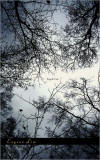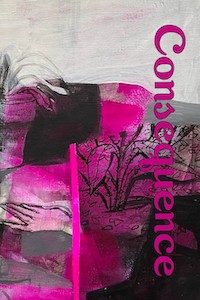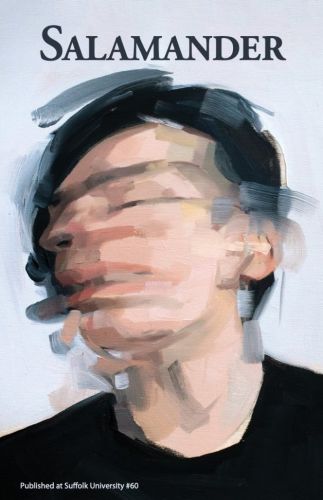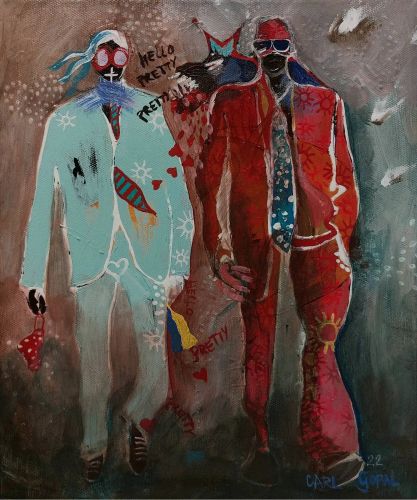If divorce is a totaled car, then Eugene Lim’s Fog & Car is a multiple vehicle pile-up. Huge accidents tend to occur in rain or fog – the low-visibility tricking drivers into thinking other cars are further away than they really are. Throwing everything into darkness, Lim’s novel forces its characters, and the reader, to crane forward, to squint their eyes, to try get their bearings, just to keep from crashing. And all of this happens after an off-stage break-up.
If divorce is a totaled car, then Eugene Lim’s Fog & Car is a multiple vehicle pile-up. Huge accidents tend to occur in rain or fog – the low-visibility tricking drivers into thinking other cars are further away than they really are. Throwing everything into darkness, Lim’s novel forces its characters, and the reader, to crane forward, to squint their eyes, to try get their bearings, just to keep from crashing. And all of this happens after an off-stage break-up.
Fog & Car’s chapters tick tock between Jim Fog and his ex-wife Sarah Car dusting themselves from the wreck of their marriage, licking their wounds, trying to make sense of their failures as individuals and as a couple, to redefine who they are outside of each other’s arms. Relationships often dissolve in order to escape boredom, chaos, or to avert some imagined disaster, but just like that car in a fog smashing into another car and that car smashing into another, sometimes a break-up leads to even further chaos and disorder. Mr. Fog and Ms. Car’s divorce leads to deep soul-scouring, mystery, chaos, some kind of redemption for one, and, for the other, dissolution, menacing darkness, and an augured, but still uncertain, end. Their surnames should have signaled that their relationship was doomed from the start, but Lim’s novel cannot be reduced to allegory.
Fog & Car is also about another marriage, namely, form and content. Lim has a poet’s eagle eye for resonant detail, an artist’s eye for symbolic representation. Throughout the novel, he plays with the book as an object, artfully “designing” his characters’ consciousnesses, their fragmentation, their confusion, their emptiness, on the page much like a painter would. Sarah Car, adrift and bereft, spends much of the novel’s first half figuring herself out, exploring things she’d forsaken, and ironically finds an anchor by learning to swim.
She swims with pleasure. The moment just previous to her entrance into the water is one of almost sexual anticipation. She thinks it may be a link to this other place, this relative place, one of body perhaps, except the anticipation seems to be not for any act but a void, or perhaps the body remembers something the mind, not being able to state, does not. In any case the actual swimming is also conscious, efforted, a process of learning. It is complex, in the end, and one which she enjoys participating in. The dive
into the water, the random slush and splish of first movement and then that sounds relaxation into a rhythm of arm and water, distance and turn,
turn and distance, forth
and back.
Lim’s use of paragraph breaks captures Sarah’s movement as much as it slows time down, compelling the reader to take in breaths, falling into Sarah’s rhythm. It’s simply breathtaking. Furthermore, a whole study could me made of how Lim employs ellipses, caesuras, sentence fragmentation, and pages of white space.
But Fog & Car is no lifeless formalist exercise. Every word serves greater concerns, that is, attempting to define what love means, what solitude is, how to heal, how to make sense of meaninglessness. Jim, while picking at his scabs, and digging the lint from his navel, takes enlightening philosophical turns. Reflecting on what it means “to live alone,” he decides it had meant “a life directed interiorly, shaved of all other perspective.” He’d set his house to be a “simple machine, a portal made of comfort and minimum decoration, to transport [him] to the nation where [he] had lived, named Mind, peopled by characters called Memory and Dream.” It is Jim’s depletion, forced by the huge energy expenditure of a hermit’s life, which ushers his awareness that he’s failed to realize his ambitions. And he ultimately learns that “self-knowledge was a myth of varying degrees of falsehoods.”
If Lim’s focus remained here, that is, on the contrast between Jim and Sarah’s ways of handling their divorce, Jim wavering between navel-gazing and nostalgia, Sarah allowing everything to fall apart, it would have been enough. But the narrative, in a manner at times astounding and often confounding, takes off in unexpected directions, much like the dream-logic of a David Lynch film. The mysterious twist begins when Sarah discovers a lost friend of Jim’s, named, appropriately enough, Frank Exit. Through a series of serendipitous encounters all threads somehow intertwine. How Lim manages to negotiate the reversals, to maintain believability, to take the reader with him, is only part of his success, for it is, ironically, the story’s lack of resolution that brings satisfaction.
Divided into three sections, “Mirror,” “Marriage,” and “Mirage,” Fog & Car masterfully navigates the subtext beneath dissolved relationships, paradoxically uses silence to create form. It balances, albeit in a detached tone, compassionate depictions of moral dissolution with Murakami-styled fabulist plot departures, dramatic reversals, and coincidental connections. It leaves the reader with a balled up jumble of narrative threads, but in such a sophisticated and befuddling manner as to force Murakami’s own mind into a tailspin. Fog & Car is an extraordinary debut.





